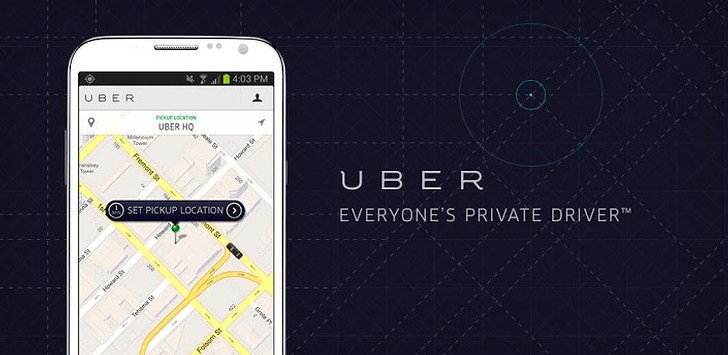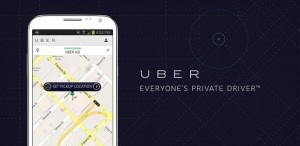At a time when fuel prices show no sign of declining anytime soon, the radio cabs industry has taken off in a big way in India and has captured the imagination of India’s burgeoning middle class. Studies show that the radio cabs business is worth $ 9 billion in is growing at an impressive rate of 17% per year in India. Against this backdrop, the rise of Uber as a leader amongst the new generation of dematerializing, demonetizing and democratizing technologies in the transport sector has been hailed in some quarters and reviled in others. Uber’s growth since its inception in 2009 has been nothing short of exceptional – it has established its footing in 45 countries and is valued at over $18 billion. Uber claims to provide hassle-free and expeditious services that not only resolve a major pain point in the transport industry, but also have the potential of obviating the need to buy one’s own vehicles in order to be able to commute in a smooth, fast and reliable manner. It would be apposite to understand how Uber exactly works in order to determine what legal impediments can stultify its growth in India.
An overview of Uber’s services
Uber follows a fairly simple system of operation. First, Taxi users as well as taxi operators need to get themselves registered on Uber in order to access its services. While registering, customers are required to supply their credit card details which are used to process the payment after every ride. After registering, customers can use Uber’s GPS facility to find out if there are any taxi operators in their vicinity. In order to get the most relevant results, customers are asked to select what kind of car they require along with the details of their destination. Thereafter, the app informs the user about the estimated price of the journey and the expected time of arrival of the taxi along with details of the driver such as his/her name, photo and contact number. On reaching the desired destination, the app automatically charges the bill to the user’s credit card and a copy of the bill is mailed to them shortly afterward. Interestingly, Uber also allows multiple customers to split the fare. Uber pockets 20% of the fare amount and the remaining 80% goes to the taxi operator. The cars most commonly used by Uber are Toyota Innovas, Camrys and Fortunas. Uber’s business model is in consonance with what is commonly referred to as the 6D strategy. The 6 components of this strategy are:
A. Digitized experience: Uber seeks to fully digitize the experience of booking taxis, choosing one’s desired destination, making payments, etc.
B. Deceptive: Uber’s business model appears deceptively simple even though it includes within its fold an admixture of a large array of complex components.
C. Disruptive: Uber has certainly caused a major disruption in the radio cabs business and has ushered in a paradigm shift in the relationship between taxi users and operators.
D. Dematerialized: Uber has fully dematerialized the need to own a personal vehicle in order to be able to commute efficaciously as well as the need to own a large number of vehicles in order to operate in the ridesharing business.
E. Demonetized: Uber seeks to cut down on the unnecessary fees and taxes that are associated with the services provided by taxi operators and also advises its customers not to pay any tips to drivers.
F. Democratized: Uber seeks to provide every smartphone user access to its facilities and thereby aims to make a sector that has hitherto been the preserve of the rich accessible to every person who has a smartphone.
Provisions of the Motor Vehicles Act, 1988
There is considerable ambiguity about the applicability of various facets of the Motor Vehicles Act, 1988 to Uber. This is primarily because it is difficult to clearly classify Uber’s services into one of the categories that the MV Act envisages. Section 66 and 69 of the Act make it explicitly clear that any person owning a motor vehicle who wishes to use such a vehicle as a transport vehicle for carrying passengers must obtain a permit in the prescribed manner from the Regional Transport Authority. These provisions would be relevant to private car owners who wish to join hands with Uber to provide transport services. State governments, in exercise of their powers to frame rules for the effective administration of the Motor Vehicles Act, have put in place radio taxi schemes for the functioning of radio taxis. Broadly speaking, these schemes unequivocally state that operators must possess a fleet of a certain minimum number of taxis and must establish a control room with the ability to conduct radio communication round the clock with their taxis plying on roads. Moreover, every vehicle must have an electronic fare meter and must be fitted with GPS/GPRS-based tracking devices and a mobile radio. In addition, it is essential for the applicant to show that it has enough parking space and the necessary infrastructure for running radio cabs in order to obtain the required permits. However, it is unclear whether it is Uber’s prerogative to perform any of these functions or not. The ambiguity can be attributed to three principal factors. First, Uber doesn’t own or manage any cars; it merely acts as a connecting link between customers and taxi operators. Since the MV Act does not contain any provisions grappling with the working of taxi aggregators, it is difficult to clearly delineate Uber’s functions and rights under the existing legal framework. Second, Uber’s story can best be described as an example in a long thread of cases in which the law has been found to be woefully inadequate in regulating technological innovations. In such a situation, law enforcement authorities often try to stretch the existing provisions wide enough to bring circumstances that those provisions were never designed to grapple with within their ambit. Third, a closer inspection of the MV Act clearly shows that the Act was designed with the primary goal of regulating the conduct of drivers and car owners to prevent untoward incidents. Therefore, it does not contain any substantive or meaningful provisions for regulating complex business models that are designed to address pain points in the transport sector.
Safety concerns
Since Uber seeks to leverage the power of various services whose safety has been a subject of active debate, concerns about Uber’s safety are bound to arise. The main areas of concern are the method of processing credit card payments; the authenticity of the drivers that Uber partners with; availability of safeguards to deal with different contingencies and ways of ensuring the safety of female passengers, especially at odd hours. In order to assuage the unease of its customers, Uber claims to follow a two-fold approach in this regard. First, it works with its partners to follow a rigorous screening process to ensure that only those drivers who possess the required competence and have a legitimate license and insurance cover are selected. Second, customers are encouraged to rate every driver on a 5-star scale. This allows Uber to assess the competence of its drivers and to take appropriate steps to improve the quality of the drivers that are associated with it. In addition, the app also includes a feature using which customers can inform their friends or family about their estimated time of arrival along with all necessary details of the driver and vehicle. Since the app collects substantive personal data, it is necessary to comply with contemporary data protection standards. More specifically, since Uber collects sensitive financial information, it has to ensure that its privacy policy and security practices and procedures are in accordance with the Information Technology (Reasonable Security Practices and Procedures and Sensitive Personal Data or Information) Rules, 2011. This basically implies that such information must be collected in accordance with the 8 principles underpinning data protection laws across the globe: Collecting only necessary data; maintaining the quality of the data collected; collecting the data for a clearly defined purpose; using the data for the specified purpose; putting in place adequate safeguards; having a fair and transparent system; allowing customers to alter their data and, finally, maintaining accountability.
Method of processing payments
The greatest roadblock to Uber’s growth in India lies in the methodology that it adopts for processing payments received from taxi users. In order to clamp down on credit card frauds and to restore the public’s faith in cashless transactions, the RBI put in place a 2-step authentication system a few years ago. Under this system, the user is not only required to enter his credit card details i.e. the card number, expiry date and CVV number, but is also expected to complete the second step in the authentication process by entering a one-time password, which is sent to his/her registered phone number on request, to complete a transaction. This second step in the authentication process is what has emerged as a thorn in Uber’s side. As mentioned earlier, the payment is automatically collected by Uber when a customer reaches his destination; he is not required to enter any additional password or PIN to complete the transaction. In a note issued on August 22nd, the RBI accused companies that do not follow the second step in the authentication process of camouflaging and flouting extant instructions on card security. The position taken by the RBI is totally incompatible with the business model that Uber adopts in that it significantly undermines, if not diminishes, Uber’s competitive advantage. The RBI has asked companies who do not follow the 2-factor authentication process to get their act together by the 31st of October. Only those companies whose payment gateways are not in India can circumvent the 2-step requirement. For example, a person does not need to enter a one-time password while shopping on amazon.com, even though the OTP has to be entered while shopping on amazon.in. Although Uber’s payment gateways are not located in India because all the payments are processed by its operating firm called Uber BV located in the Netherlands, it still has to comply with the 2-factor authentication process because 80% of every payment that it receives has to be funneled back into India in favour of taxi operators. Uber now basically has two options. Either it will have to completely shut down its operations in India, or it will have to incorporate the second step in the authentication process into its app to make its business model legally sustainable. In case it chooses to opt for the latter, it is believed that all payments will automatically get delayed by a period of 2-10 minutes. Furthermore, this problem would be further exacerbated by the fact that many telecom operators are unable to provide good network coverage to their users in a large number of areas. Many experts argue that the 2nd step would be superfluous in the context of services like Uber. The main reason why the second step provides additional security is because, after entering the credit card details, a user receives a message on her phone which informs her about the transaction and contains the one-time password. This ensures that the person executing the transaction is in possession of his/her phone. However, since Uber is a smartphone application, the user would anyway have access to her phone while making the payment, so the second step would not provide any additional layer of security.
Foreign exchange laws
Another impediment which poses a serious threat to Uber’s future in India is the fact that all its transactions are processed in the Netherlands. Although it is not clear what modalities Uber adopts for processing payments, it is believed to follow one of the following two methods. First, at the end of every journey, the entire fare is repatriated to the Netherlands where Uber’s operating firm is located. Thereafter, Uber deducts its own share of the payment and pays the remaining amount to taxi operators located within India. Second, the entire fare is collected in a non-resident account in India and the amount that is left after the Indian taxi operator is given its due is then transferred to Uber’s account overseas. The first of the aforementioned methods is believed to be inconsistent with foreign exchange laws. More specifically, it is argued that it amounts to a capital account transaction and results in the alteration of assets and liabilities of Indian taxi operators abroad. Generally speaking, capital account transactions are not allowed under the Foreign Exchange Management Act. In addition, the kind of transactions that Uber engages in do not fall within the ambit of the Foreign Exchange Management (permissible Capital transactions) Regulations, 2000 which allow for certain capital account transactions. In sum, it would not be unfair to say that the lack of clarity and transparency in terms of how payments received by Uber are precisely processed coupled with the fact that its operating firm is located in the Netherlands – a country famous for its favourable withholding tax regime – gives rise to the assumption that Uber adopts a surreptitious and clandestine methodology for processing payments.
Tax laws
Recent reports indicate that Uber has not paid a single penny in taxes to Indian tax authorities since it began operating in India. As a result, the Mumbai Service Tax Department recently asked Uber to set out cogent reasons explaining why it hasn’t paid service tax so far. What makes this issue especially complicated is the fact that tax authorities are not sure whether taxes will have to be paid by Uber or by taxi operators that Uber works with. It is a matter of active debate whether Uber can actually be mandated to pay service tax. It can be stated with reasonable certainty that Uber’s income exceeds the basic exemption limit of INR 10 lakh, so, viewed through that lens, it is obligated to pay service tax. In addition, radio cab operators such as Meru Cabs and EasyCab do pay service tax on an ad valorem basis in accordance with a circular issued by the Central Board of Excise and Customs that makes it mandatory for radio cab operators to pay service tax. However, as mentioned earlier, Uber is very different from other radio cab operators because Uber does not actually rent its own vehicles to passengers; it merely acts as an intermediary between customers and cab drivers. It would be interesting to see how this controversy plays out.
Other legal issues
First, since Uber’s drivers are independent contractors, it is difficult for Uber to constantly monitor their conduct. The upshot of this is that customers often choose to repose their faith in a particular driver merely because they fully trust Uber’s recommendations. However, if that driver behaves in an irrational, negligent or unreasonable manner, it may not be possible to hold Uber fully liable for the actions of the driver. Second, Uber has not set up any legal entity in India. As a result, it is very difficult for any regulator to hold Uber accountable for its actions. Moreover, Indian regulators also do not have a single point of contact to enquire about Uber’s operations in India. Finally, Uber users report that charges for a journey are either deducted in the form of rupees or dollars. Indian citizens cannot do business in a foreign currency. Therefore, as Uber is responsible for facilitating transactions between passengers and drivers, it can be argued that it is encouraging Indian citizens to break the law by transacting in a foreign currency.
Legal position of Uber in other jurisdictions
As Uber is still in a nascent stage in India, it may be instructive to succinctly analyze how other countries have viewed its rise. Uber has been banned in Brussels on the ground that it partners with taxi drivers who do not have a license or the required permission to use their private vehicles for earning money from passengers. Similarly, local authorities in Brazil have repeatedly imposed a fine on drivers working with Uber and have advocated in favour of suspending Uber’s services. In many jurisdictions, most prominently England, various groups have tried to ban Uber on the ground that the criteria that it uses i.e. time/distance for calculating the fare of a journey is similar to the methodology adopted by a taxi meter. As a result, they argue that Uber should be banned because it has not explicitly been authorized to use a taxi meter. In most other jurisdictions, Uber has been at the receiving end of a large number of cease and desist letters for not complying with transport, banking and tax laws.
Conclusion
The steps taken by the RBI and other regulators to clamp down on Uber’s activities are reflective of their desire to engage in paternalistic micro-management instead of developing new mechanisms and evolving existing mechanisms to promote, and not inhibit, market-based innovation. Although the 2-factor authentication system for cashless transactions provides additional protection, it is necessary to relax existing norms to accommodate socially beneficial business models, especially for the kind of small-value transactions that companies like Uber engage in. A failure to revamp existing frameworks to promote innovation-based growth would not only have several deleterious effects on the economy, but would also run afoul of the goal of making our banking system more accessible and affordable that lies at the heart of most government policies.
 Serato DJ Crack 2025Serato DJ PRO Crack
Serato DJ Crack 2025Serato DJ PRO Crack










 Allow notifications
Allow notifications




[…] Uber legal in India? Back on 15th October, Rahul Bajaj wrote on this topic on iPleaders blog (read here) under my guidance. We looked into Uber’s business model and current laws in India. As we would […]